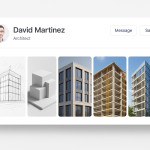From directory click to contract: nurturing leads who find you online
A recruiter or client has clicked your profile inside an online directory. Great news! Yet that click is only the first milestone. This guide shows you how to turn directory traffic into signed deals—step-by-step, without sounding pushy or losing precious time.
Why directory traffic is gold-standard for lead quality

Unlike social media lurkers, directory visitors arrive with a clear brief and a shortlist mindset. They actively filter location, budget, skills and style—meaning their purchase intent is already high. When someone opens your listing, they are closer to hiring than any other digital touchpoint except a direct referral.
The buyer journey in a creative directory
- Search & filter: the user applies tags such as “sustainable materials” or “stage-ready portfolio”.
- Profile scan: they skim your hero image, headline and call-to-action buttons for credibility clues.
- Bookmark or message: if you pass the five-second test, they save or contact you immediately.
- Qualification: you respond, exchange scopes and submit a quote.
- Negotiation & contract: both sides agree on deliverables, timeline and terms.
Map your post-click funnel
The simplest way to stay organised is to treat every new profile visit like the top of a micro-funnel. Track each step so you know where prospects leak out.
| Stage | Goal | Typical timeframe | Key metric |
|---|---|---|---|
| Profile view | Capture interest | Instant | View-to-save rate |
| Save / shortlist | Trigger first contact | 0–48 h | Save-to-message rate |
| Message exchange | Book call or meeting | 2–5 days | Reply time (hrs) |
| Discovery call | Send proposal | 1 week | Call-to-proposal rate |
| Proposal | Signed contract | 1–3 weeks | Proposal win % |
The first 24 hours: speed beats perfection
Your reply time is the single most reliable predictor of conversion. Aim for under two business hours. If you cannot craft a full reply, send a quick acknowledgement:
“Thanks for shortlisting me for your spatial design brief. I have availability for a 15-minute call today or tomorrow to confirm your timeline and deliverables. Let me know what works.”
Tools that shave minutes off your response
- Canned replies stored in your directory inbox (see the etiquette tips in this messaging guide).
- Mobile push notifications so you never miss a first contact.
- Calendar links offering two or three predefined slots—avoid back-and-forth.
Personalise follow-ups without creeping people out
Directory analytics reveal which sections a visitor clicked—reel, image gallery, rates. Use those clues to tailor your message:
- If they played your sustainability reel, highlight your recent eco-certified project and link to detailed specs.
- If they dwelled on pricing, share a transparent price range table upfront.
Need inspiration? Check the article on profile tweaks that lift shortlist rates.
Build instant trust with social proof & risk-reducers
Every additional trust signal shortens the negotiation cycle:
- Verified credentials: badges, union numbers, or verified credits.
- Mini case studies: 150-word stories with before/after visuals.
- Process explainer: a one-page PDF outlining milestones and feedback loops.
- Fast payment workflows: mention that you accept escrow or directory escrow tools (read this payment streamlining piece).
Automate nurturing—still sound human
Automations save hours, but robotic language kills deals. Combine:
- Trigger-based emails: send a portfolio deep dive when a prospect clicks your gallery twice.
- Pipeline boards: kanban or CRM columns mirroring the funnel stages above.
- Content snippets: pre-approved answers to common objections (timeline, IP, budget flexibility).
Measure, iterate, improve
Start with two metrics only: view-to-message rate and proposal win %. Lift the first with better thumbnails; fix the second with clearer scope documents. For deeper insights on visitor behaviour, dive into directory analytics decoded.
Benchmark your stats against peers
Artfolio's public statistics for top-ranking spatial designers show an average 12 % save-to-message rate. Use that figure as a baseline for your own goals.
Common pitfalls—and how to dodge them
- Slow replies: any delay beyond 24 h signals low professionalism.
- Generic templates: if your name or project brief is wrong, trust evaporates.
- Rate secrecy: hiding all numbers stalls progress; share at least a range.
- Proposal overload: 20-page PDFs scare busy recruiters—stick to 3–4 pages.
Quiz: Are you a lead-nurturing pro?
FAQ
- How quickly should I send a proposal after the discovery call?
- Ideally within 48 hours while the project is top of mind. Send a summary email within two hours, then the full proposal the next day.
- What if a lead ghosts me after saving my profile?
- Send a polite follow-up after three business days, share a relevant case study, and ask one clarifying question to reopen the conversation.
- Can I automate follow-ups without sounding robotic?
- Yes. Use merge tags for the person's name and project title, and limit each email to one clear next step.
- How much detail should my first quote include?
- Break down deliverables, timeline, and two payment milestones. Leave advanced clauses (IP, revisions) for the contract stage.
- Is sharing rate ranges publicly a risk?
- No. Transparent ranges filter out ill-fitting leads and speed up negotiation with serious buyers.
Next step: turn insights into revenue
Apply the above tactics to your own profile today. Refine thumbnails, prepare canned replies, and track your funnel. With consistent action, you will move from directory click to signed contract faster than ever.
Ready to level-up? Audit your messaging workflow now or dive deeper into optimising directory tags for higher ranking. Happy contracting!











